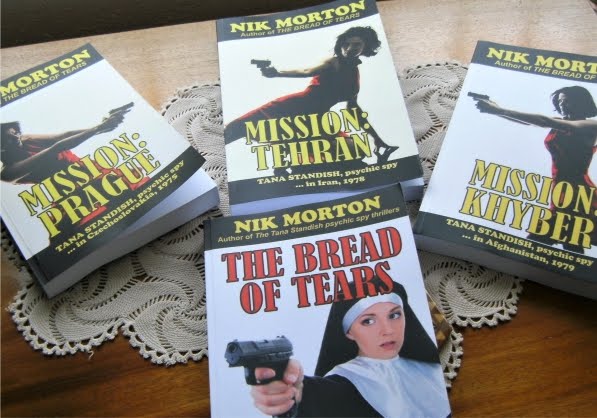Thomas H. Cook is the author of over 25 novels, mainly in the mystery and crime genre. Flesh and Blood (1989) is a sequel to Sacrificial Ground, which I haven’t read.
After the events in Sacrificial
Ground, PI Frank Clemons is living with Karen, a survivor from his last
case. They’ve moved to New York, but Frank finds it hard to settle, and often
slips out in the early hours to imbibe whiskey.
A garment designer called Hannah is slain and her hand is
severed and is missing. While the police investigate the killing, Frank is
hired by Hannah’s rich employer, Imalia, to locate any living relatives of the
dead woman, so they can claim the body after the police have finished with it. Frank
is helped in his quest by the mysterious Farouk, who proves useful with many
contacts; they make a good world-weary team.
Hannah had two sisters (don’t tell Woody Allen), but they’re
hard to find. Frank starts to dig, from Hannah’s childhood with her rabbi
father, fresh from Poland, in the 1920s. Slowly, a picture of Hannah begins to
emerge. After their father’s death, Hannah cared for her younger sisters and
found work in a garment sweat-shop. She joined a union and became a visionary,
instituting a strike for better conditions in the 1930s.
‘For a long time, Frank stared silently at the photograph.
He could almost feel the cold winter wind which lifted her scar and held it
fluttering in the air, hear the roar of the crowd as they cheered her, feel the
triumph of her hand in the crisp biting air, sense the sheer driving power of
her voice as it pealed over them, crying out the words (of inspiration)’ (p117)
This is one of those detective novels American authors do so
well, peeling away the past, and in the process illuminating the working and
living conditions suffered by the deceased protagonists. The fashion industry of
the time is laid bare: the final revelations are troubling, even shocking, in
several ways, but it would be unkind to reveal why; suffice it to say that the
conclusion was satisfactory and provided a closure of sorts for Frank.
In many instances, Cook’s writing tends to rise above the
standard PI novel. Frank exhibits great empathy for the victims: ‘Whatever
small hope still remained for Hannah Karlsberg had died in that moment, and a
few terrible seconds later, she had died as well.’ (p35)
And as he delved into Hannah’s history, getting to know her
through the reminiscences of those who knew her, ‘He could feel the heaviness
of time all about him, the brevity of life, the way it drained away in a quiet
rush of days until it was gone, gone as if in one quick, invisible streak.’
(p109)
Throughout, there’s the shadow of Hannah and her brutal
death, hovering, and as Frank’s investigation brings him close to a solution,
the foreboding becomes fact: ‘Frank turned and looked at the room, and as he
did so, a chill swept over him, haunting and inexplicable, a sense that the
world had suddenly shifted in its flight, edged itself a little deeper into the
engulfing darkness.’ (p245)
Recommended.
Editorial comment.
(Minor points, but perhaps instructive when writing).
Like a number of US crime authors, Cook displays a tendency (here,
at least) to overdo dialogue attribution, particularly when there are only two
individuals in a scene, for example:
‘Early in
the morning,’ Imalia said. ‘That’s all I can tell you.’
‘And you
said she was an employee of yours,’ Frank said.
‘Yes.’
‘What do
you do?’ Frank asked.
Imalia
smiled quietly. ‘You don’t know?’
Frank shook
his head. (p17)
It’s not a simple call, of course. Injecting a name from
time to time is necessary to keep the reader on track, though the dialogue
itself is usually sufficient to indicate who is speaking. Naturally, he sensibly
avoids the plethora of alternatives to ‘he said, she said’.
It shouldn’t be too difficult to find names that don’t begin
with the same letter (to avoid reader confusion): yet here we have Imalia
Covallo, Frank Clemons, and desk sergeant Calvino. Then the two main male
protagonists are Frank and Farouk.
Not a particularly good cover, Berkley Books: you can barely see the 'severed' hand dark grey on black, and the title is broken up by that same hand.


























2 comments:
Cracking review - thanks Nik. Not an author I'm familiar with so I'll go look him up. Loved the Woody Allen reference...
Thanks for the feedback, and glad you liked the Woody Allen joke!
Post a Comment